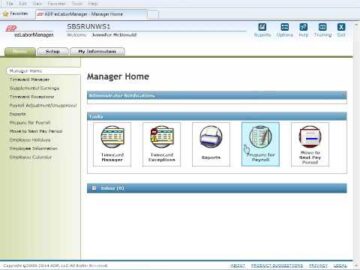
With customer invoices as collateral, the lender gives the borrower cash or a line of credit, normally 70% to 90% of the value of the accounts receivable. The clothing store’s quick ratio is 1.21 ($10,000 + $5,000 + $2,000) / $14,000. The Asset-bundle API can also export QuickSight assets as AWS CloudFormation templates, one of the most popular infrastructure as code (IaC) frameworks.
The quick ratio is widely used by lenders and investors to gauge whether a company is a good bet for financing or investment. Potential creditors want to know whether they will get their money back if a business runs into problems, and investors want to ensure a firm can weather financial storms. What if a company needs quick access to more cash than it has on hand to meet financial obligations? Companies should aim for a high quick ratio because it can help attract investors. It also increases the company’s chance of getting loans, as it shows creditors that it is able to handle its debt obligations. The value of the company’s quick assets is $3 million ($200,000 + $300,000 + $2,500,000).
Accounts payable, accrued expenses, and short-term loans all fall under current liabilities, which are essentially debts that must be paid off in a year. Some inventory items are also considered quick assets, especially if they are in high demand and have a low cost of production. Your quick assets as a bakery owner would be the bread and pastries, as they can be sold quickly and created at a low cost.
NCERT Solutions for Class 12 Accountancy Chapter 5, Accounting Ratios – Jagran Josh
NCERT Solutions for Class 12 Accountancy Chapter 5, Accounting Ratios.
Posted: Thu, 03 Aug 2023 13:55:38 GMT [source]
A current ratio of more than one means that a company has more current assets than current liabilities, which indicates good liquidity. In this hypothetical scenario, let’s assume your company’s current liabilities are $20,000 while its quick assets are $10,000. Your quick ratio is 0.5, which means you can only cover half of your current liabilities with your quick assets. While quick assets are primarily focused on short-term cash needs, businesses can potentially utilize them for expansion purposes. However, it is crucial to strike a balance between using quick assets for expansion and maintaining enough liquidity to meet immediate financial obligations.
Example of Quick Assets: The Quick Ratio
This perception increases the likelihood of obtaining favorable credit terms and conditions. Potential investors or lenders often evaluate a company’s quick assets to determine its financial stability and ability to generate cash flow. A company with strong quick assets is generally viewed as more secure and less risky, attracting potential investors and lenders.
The total of all quick assets is used in the quick ratio, where quick assets are divided by current liabilities. The intent of this measurement is to determine the proportion of liquid assets available to pay immediate liabilities. The quick ratio is typically measured when a lender is evaluating a loan request from a prospective borrower whose financial situation appears to be somewhat uncertain. The quick ratio and current ratio are two metrics used to measure a company’s liquidity. The quick ratio yields a more conservative number as it only includes assets that can be turned into cash within a short period 一 typically 90 days or less. The quick ratio is different from the current ratio, which is another measure of liquidity that includes all current assets, not just the quick ones.
There are also quick assets for the products or services that you have provided. For example, accounts receivable refers to the funds owed to you by your customers. Suppose an insurer covers a lot of property in Florida and then a hurricane strikes in the region. That insurer is now going to have to find more money than it would normally anticipate to pay claims.
Institutional Interest Peaks in Asset Tokenization – Techopedia
Institutional Interest Peaks in Asset Tokenization.
Posted: Wed, 02 Aug 2023 08:24:22 GMT [source]
Marketable securities are investments that can be easily converted into cash, such as stocks, bonds, and mutual funds. Accounts receivable are the amounts owed to a company by its customers for goods or services sold on credit. Inventory can be quite difficult to convert into cash in the short term, and so is generally not available for paying off current liabilities. Current assets are included in the current ratio, which compares current assets to current liabilities. The inventory differential carries over into this ratio, which is not as useful as the quick ratio for determining the short-term liquidity of a business. The main assets that fall under the quick assets category include cash, cash equivalents, accounts receivable, and marketable securities.
Why Are Quick Assets Important?
Walmart’s short-term liquidity worsened from 2021 to 2022, though it appears to have almost enough current assets to pay off current debts. A wide majority of current assets are not tied up in cash, as the quick ratio is substantially less than the current ratio. In addition, though its quick ratio only dropped a little, there are bigger changes in cash on hand versus the balances in accounts receivable. The quick ratio is an acid test ratio that measures a company’s ability to pay its short-term liabilities with its quick assets.
In most cases, cash often comes first when recording current assets on a company’s balance sheet. The cash holdings of a company include petty cash, currency and checking accounts. After cash is recorded, other current assets such as cash equivalents, accounts receivable, prepaid expenses, inventory and marketable securities are recorded. Analysts frequently use quick assets to assess a company’s ability to meet its immediate bills and obligations due within a year. This ratio enables investment professionals to determine whether a company will be able to meet its financial obligations if its revenues or cash collections slow. The quick ratio is more conservative than the current ratio because it excludes inventory and other current assets, which are generally more difficult to turn into cash.
Definition of Quick Assets
Quick assets include cash on hand or current assets like accounts receivable that can be converted to cash with minimal or no discounting. Quick assets generally do not include inventory because converting inventory into cash takes time. Though there are ways in which businesses can quickly convert inventory into cash by providing steep discounts, this would result in high costs for the conversion or loss of value of the asset.
- Compared to other calculations that include potentially illiquid assets, the quick ratio is often a better true indicator of short-term cash capabilities.
- Other important liquidity measures include the current ratio and the cash ratio.
- The company is fully capable of paying current liabilities without tapping into its long-term assets and will still have cash or cash equivalents left over.
- Quick assets include cash on hand or current assets like accounts receivable that can be converted to cash with minimal or no discounting.
- A company can’t exist without cashflow and the ability to pay its bills as they come due.
The articles and research support materials available on this site are educational and are not intended to be investment or tax advice. All such information is provided solely for convenience purposes only and all users thereof should be guided accordingly. Working capital is used to finance a company’s day-to-day operations and a lack of it can lead to solvency issues. Accounts receivable easy payroll software for startups and entrepreneurs is the money that a company expects to receive from its customers after providing them goods or services on credit. Cash items include cash on hand, cash in the bank without restrictions on withdrawals, and working funds such as a petty cash fund or a change fund. To learn more about this ratio and other important metrics, check out CFI’s course on performing financial analysis.
Example of Quick Assets
Changes in accounts receivable collection times, shifts in marketable securities, unexpected cash needs, and alterations in customer payment behavior can all impact the composition and value of quick assets. Monitoring and managing these fluctuations is essential to ensure financial stability. Quick assets are calculated by adding together cash and equivalents, accounts receivable, and marketable securities. It can also be calculated by subtracting inventory and prepaid expenses from the total current assets.
On the other hand, a company with a low quick assets ratio is considered financially risky and may struggle to pay its debts. Quick assets are an essential part of a company’s short-term financial health. They are a metric used to measure a company’s ability to pay its current liabilities quickly. Cash, marketable securities, and accounts receivable are all examples of quick assets. The quick assets ratio is a financial metric used to measure a company’s ability to pay its current liabilities quickly.
Would you prefer to work with a financial professional remotely or in-person?
Of course, the ideal quick ratio depends on the industry and the nature of your business. Some businesses have more stable cash flows and less need for liquidity than others. Inventories are excluded from quick assets because they are less liquid and take longer to be converted into cash.

The quick ratio considers only assets that can be converted to cash in a short period of time. The current ratio, on the other hand, considers inventory and prepaid expense assets. In most companies, inventory takes time to liquidate, although a few rare companies can turn their inventory fast enough to consider it a quick asset.
These types of assets are either already in the form of cash or can easily be converted into cash within 90 days. When analyzing a company’s liquidity, no single ratio will suffice in every circumstance. It’s important to include other financial ratios in your analysis, including both the current ratio and the quick ratio, as well as others.
List of Quick Assets
Conversely, a highly stable business with predictable cash flows requires far fewer quick assets. A company with a low cash balance in its quick assets can boost its liquidity by making use of its credit lines. It is important to note that inventories don’t fall under the category of quick assets. The only way a business can convert inventory into cash quickly is if it offers steep discounts, which would result in a loss of value. Accounts receivable, cash and cash equivalents, and marketable securities are the most liquid items in a company.

Quick assets are used in computing for the quick ratio, which measures a company’s ability to settle its short-term obligations using its most liquid and “quickly” convertible assets. This means that the company’s quick assets reached a total of $17,939,000 as of May 31, 2021. A company’s current ratio will often be higher than its quick ratio, as companies often use capital to invest in inventory or prepaid assets. The current ratio will usually be easier to calculate because both the current assets and current liabilities amounts are typically broken out on external financial statements.
